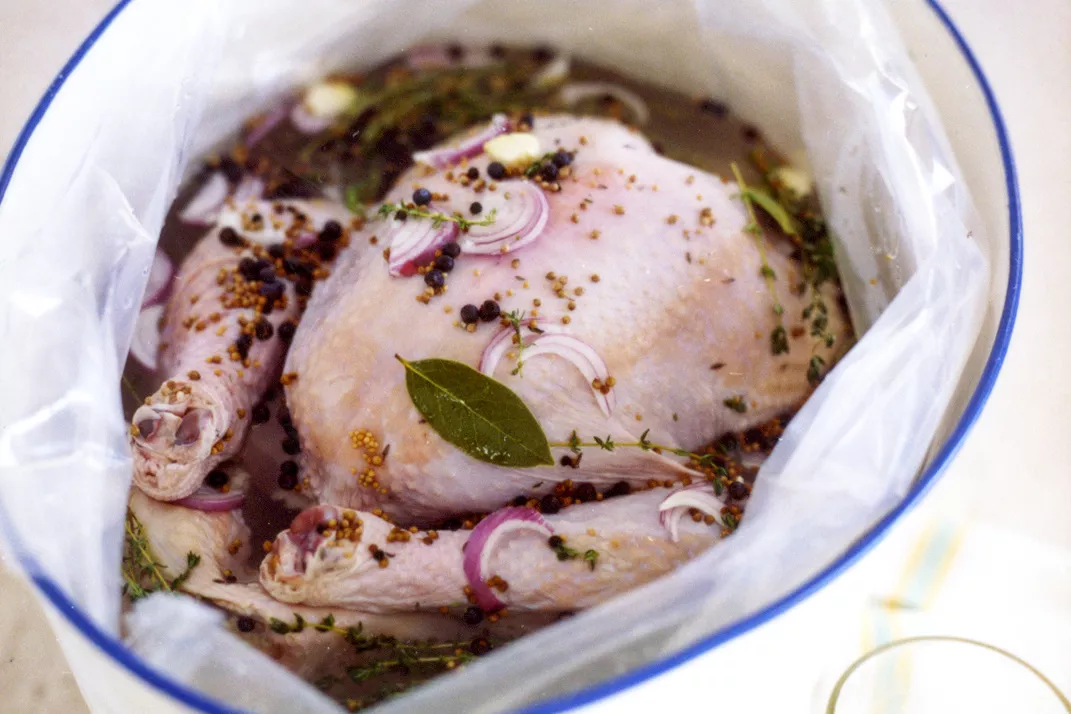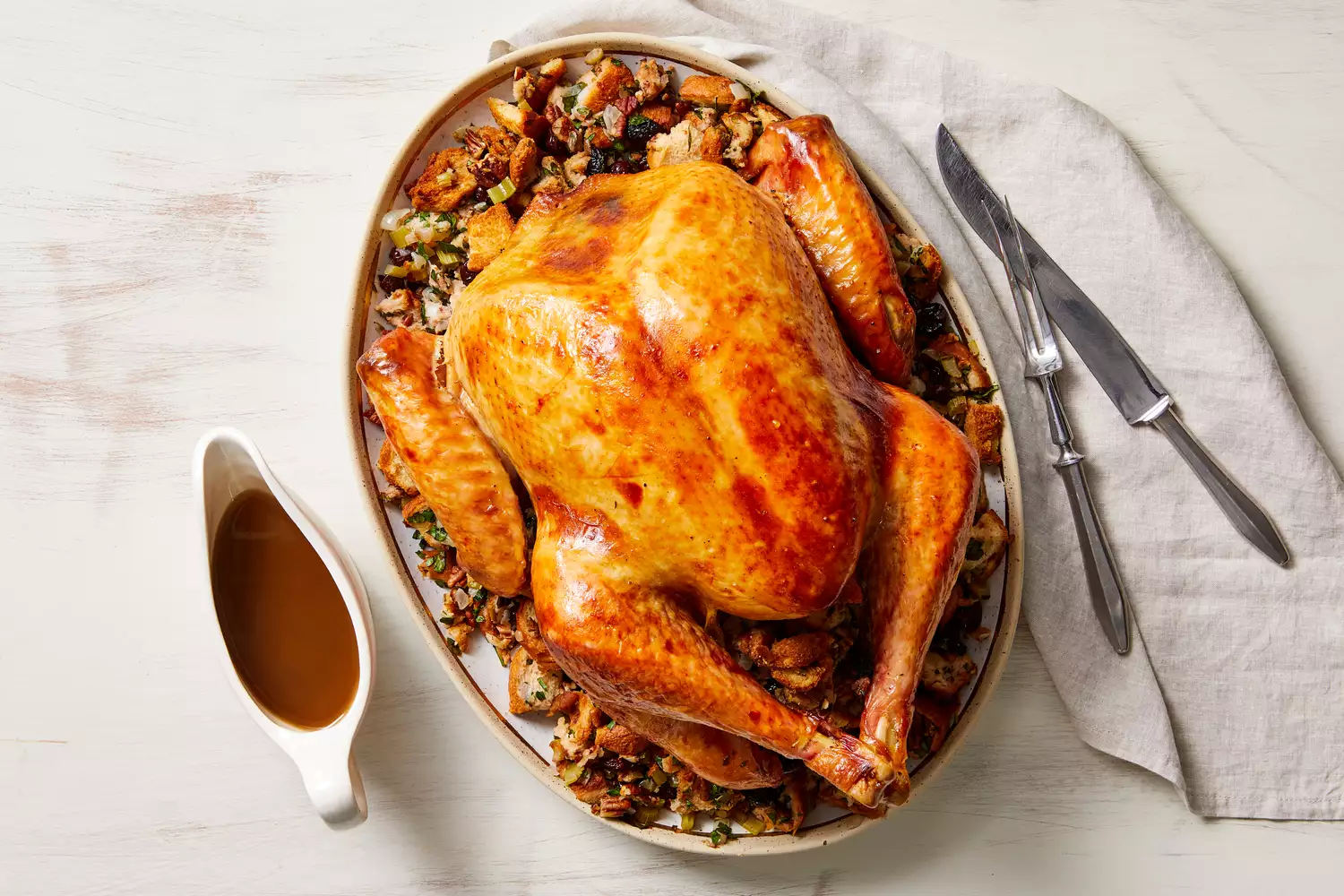
Prepared to put a perfectly roasted Martha Stewart turkey on your holiday table? Location the turkey on a bed of roasted vegetables– along with the turkey neck– to elevate the meat above the bottom of the pan and collect tasty drippings to make Rich Gravy.
Food Safety
The guidelines of food safety are the exact same every day of the year, but vacation meals can present a special set of issues due to the fact that everything is bigger: a fuller refrigerator, bigger guest list, an abundance of different meals on the menu, and a bigger bird, too. No matter how packed your refrigerator and your agenda are, however, make the effort to follow these guidelines of safe poultry dealing with at every step of the way.
How to Stuff a Turkey
The debate is ongoing about whether it’s safe to put stuffing in the turkey before roasting. (Read this to learn the benefits and drawbacks of packing a turkey.) If you do stuff your turkey, there are a few important guidelines.
Second, load the stuffing loosely into the turkey cavities. It will expand in the oven as it fills with turkey drippings, and, if it’s packed too securely, it won’t warm rapidly enough, keeping it at risky temperatures for too long.
What Is Basting?
Basting is a technique for helping foods get browned and remain wet while they’re cooking. Some turkey recipes require brushing or drizzling the bird with its own pan drippings several times while it’s roasting; other dishes require a different preparation of basting liquid (such as experienced, melted butter).
How to Tell When a Turkey Is Done
Many turkeys featured a pop-up timer already inserted in the breast, which consists of a button that’s is supposed to emerge when the meat reaches 165 degrees Fahrenheit. However, these timers aren’t constantly trustworthy or accurate, so it’s better to use a meat thermometer. When the breast reaches 160 degrees, it’s all set to come out of the oven. The recurring heat will trigger carryover cooking as the meat rests, bringing it to the perfect temperature level of 165 degrees. Cooking turkey to the appropriate temperature level is a matter of food safety, but it’s likewise a matter of tastiness: overcooked turkey can be tough and dry.
Ingredients
5 tablespoons saltless butter, room temperature
1 tablespoon each chopped fresh rosemary, sage, and thyme
Kosher salt and freshly ground pepper
1 entire turkey (about 12 pounds), defrosted if frozen, rinsed and patted dry, neck scheduled (set aside giblets for packing, if wanted).
Cornbread And Sausage Stuffing.
4 to 6 large carrots, halved crosswise.
2 large onions, cut into 8 wedges.
2 stalks celery, cut in half crosswise.
Instructions.
Roast Turkey with Herb Butter Ingredients.
Preheat oven and make herb butter:.
Preheat oven to 350 ° F with rack in the lowest position. Make herb butter: In a small bowl, mix together 4 tablespoons butter with chopped herbs; season generously with salt and pepper.
Action 1 Roast Turkey with Herb Butter.
Prepare turkey:.
Loosen up skin: Working from the neck end, slide fingers under skin up until you reach completion of the breast, being careful not to tear the skin; rub herb butter under the skin.
Step 2 Roast Turkey with Herb Butter.
Fill neck cavity with stuffing:.
Place turkey breast side down. Fill neck cavity with stuffing; prevent packaging. Close up by folding skin over and securing with skewers or trussing needles.
Roast Turkey with Herb Butter Step 3.
Tuck wings:.
Turn turkey over; bend wing ideas underneath bird so they stay in location (you might have to break the bones).
Roast Turkey with Herb Butter Step 4.
Things cavity:.
Loosely fill big cavity with stuffing.
Roast Turkey with Herb Butter Step 5.
Connect legs:.
Utilizing cotton cooking area twine, tie legs together firmly (they will overlap) so bird retains its shape and wetness throughout cooking.
Roast Turkey with Herb Butter Step 6.
Cut neck:.
Cut neck into pieces.
Roast Turkey with Herb Butter Step 7.
Prepare roasting pan:.
Mix neck pieces with carrots, onions, celery, and 2 cups water in a big roasting pan. Set roasting rack over vegetables in pan.
Roast Turkey with Herb Butter Step 8.
Rub turkey with butter:.
Raise turkey onto rack; rub with staying tablespoon butter. Season kindly with salt and pepper. Camping tent turkey loosely with foil.
Roast Turkey with Herb Butter Step 9.
Roast turkey:.
Roast 1 hour, then baste every 30 minutes with pan liquids, until an instant-read thermometer inserted into the thickest part of thigh (preventing bone) signs up 125 ° F, about 3 hours. Eliminate foil; raise oven heat to 400 ° F. Continue roasting, basting sometimes, until thigh reaches 180 ° F, 45 to 60 minutes more. Tent with foil if bird browns too rapidly; include more water if pan becomes dry.
Roast Turkey with Herb Butter Step 10.
Rest turkey before carving:.
Transfer turkey to a serving plate; cover loosely with foil, and let it rest a minimum of 30 minutes before carving.
Roast Turkey with Herb Butter Step 11.
Make-Ahead Herb Butter.
The herb butter can be made a day ahead and cooled. Return to room temperature before using.
Roast Turkey with Herb Butter.
How to Carve a Turkey.
For the majority of us, there are just a couple times of year we have any call to sculpt such a large product, so we do not get numerous chances to practice. Use our step-by-step guide for how to cut a turkey for ideas on doing it right.
Regularly Asked Questions:.
How to cook a juicy turkey?
There are several steps you can require to make sure your turkey is juicy. You can salt water it with a traditional saltwater salt water, a buttermilk salt water, or a dry salt water. You might choose to rub softened butter both under and over the skin. You can baste the turkey as it roasts. And finally, be vigilant about the temperature level. Check it often with a meat thermometer as it nears the end of its cooking time, and take it out as quickly as it reaches doneness– 160 degrees in the breast meat, which will continue to increase to 165 as it rests.
What does rubbing butter on a turkey do?
Covering a turkey with butter (under and over the skin) serves to taste and moisten the meat, along with help the skin get crispy and golden brown.
Do you put water in the bottom of the roasting pan for turkey?
We usually recommend versus putting liquid in the pan when roasting a turkey. The liquid produces steam, which will prevent your turkey from browning evenly and make the skin soft and flabby instead of crispy. Including water to the pan will likewise water down the flavor of the pan drippings, resulting in less-than-flavorful gravy. The only time we advise adding water to the roasting pan is if the drippings evaporate to the point where they’re in threat of burning. In this case, include a small amount of water– just enough to cover the bottom– and only add more as necessary.



